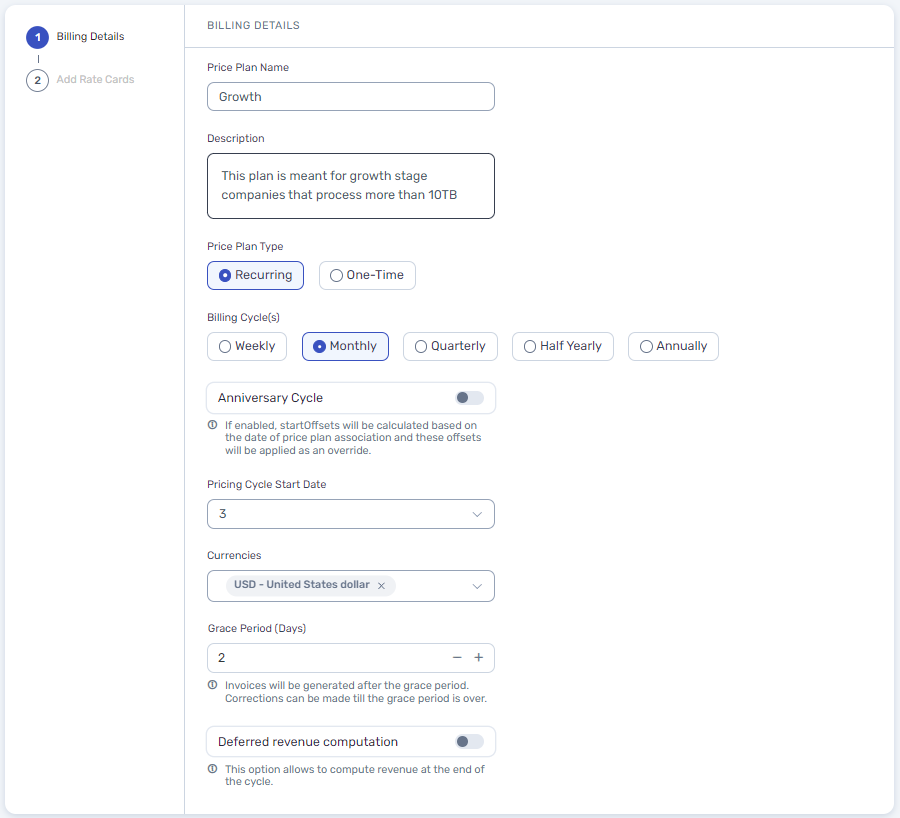- Plan type - This defines your pricing model for this catalogue/contract. You can choose if this plan is meant for one-time purchase or a subscription. One-time purchases are meant for offerings like professional services, setup or onboarding fees where there is no recurring component associated with them. If you choose ‘Recurring’ type, you can model subscriptions under this setup.
Usage based pricing would fall ‘Recurring’ since the customer has subscribed to use the service/product and will be invoiced as long as they end up consuming your product during the period of the contract.
- Currencies - Togai supports multi-currency rating by default. You can define the list of currencies your organization supports in the Admin center.
If you choose a one-time plan type, then the rest of the configurations in the Pricing cycle step would not be applicable.
- Billing cycle - You can choose whether you want the default billing cycle for the plan should be Weekly, Monthly, Quarterly, Half Yearly or Annual.
- Anniversary cycle flag - This configuration is used to define the start date of your billing cycle. When this toggle is off, you can choose what should be the start date of your billing cycle for customers who are associated with this plan. Example: If you have a standard billing cycle from 1st of every month to the end of the month, you can choose the start date as 1 here. If the toggle is switched on, then the cycle start is automatically taken as the plan association date (equivalent to customer sign-up/onboarding date). For a customer who is on a plan with Anniversary cycle, then if they have been associated a quarterly plan on 10th March, their cycle is taken as 10th March to 9th May, 10th May to 9th July and so on.
- Cycle start date - This is applicable only if the anniversay cycle flag is switched off. This option allows you to choose the start date of your billing cycle for the customers who are on this plan.
- Grace period - Grace period is the duration (defined in number of days) post the cycle end date when the invoice is still kept in an ‘Ongoing’ state and does not become ‘Due’. This allows you to verify the invoices and make any corrections, if required before the invoice for that cycle is closed.
Togai is an automated billing and invoicing platform and we suggest having a grace period of 1-2 days so as to provide time for verification and data corrections if required. Customer invoicing should be 100% accurate and cannot have any discrepancies.
- Deferred revenue computation - This configuration allows you the flexibility to change your price plan during an Ongoing billing cycle and apply changes from the start of the ongoing cycle and re-rate the customer’s usage. Ongoing billing cycles are the ones where the Invoices are not yet due and are in an ‘Ongoing’ state. By enabling this configuration, you can override a customer’s price plan and make any changes and apply them from the start of the current ongoing cycle.
You cannot have ‘In advance’ option in any rate card when the Deferred revenue computation is configured for a price plan.

Pricing cycle screen

